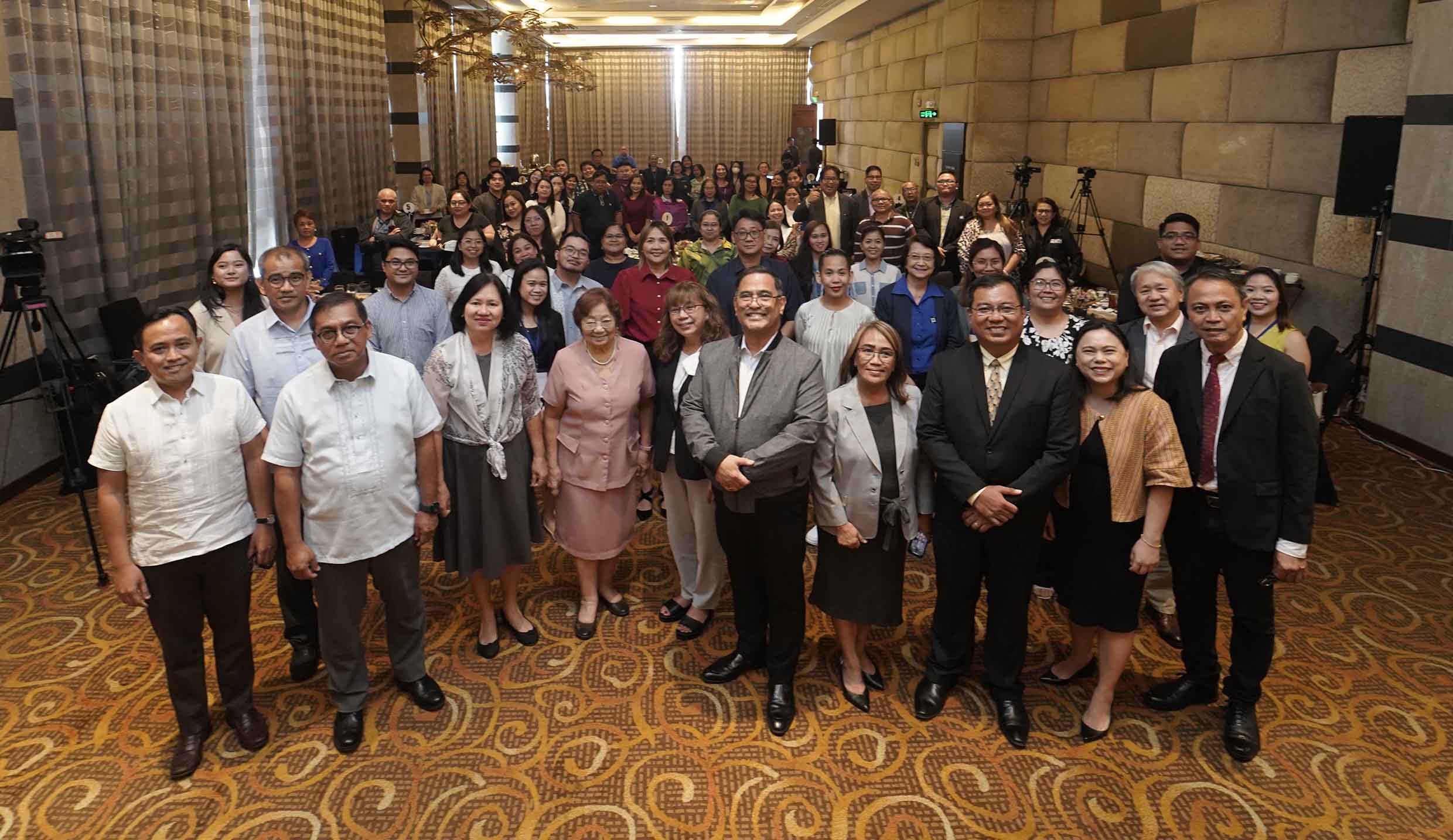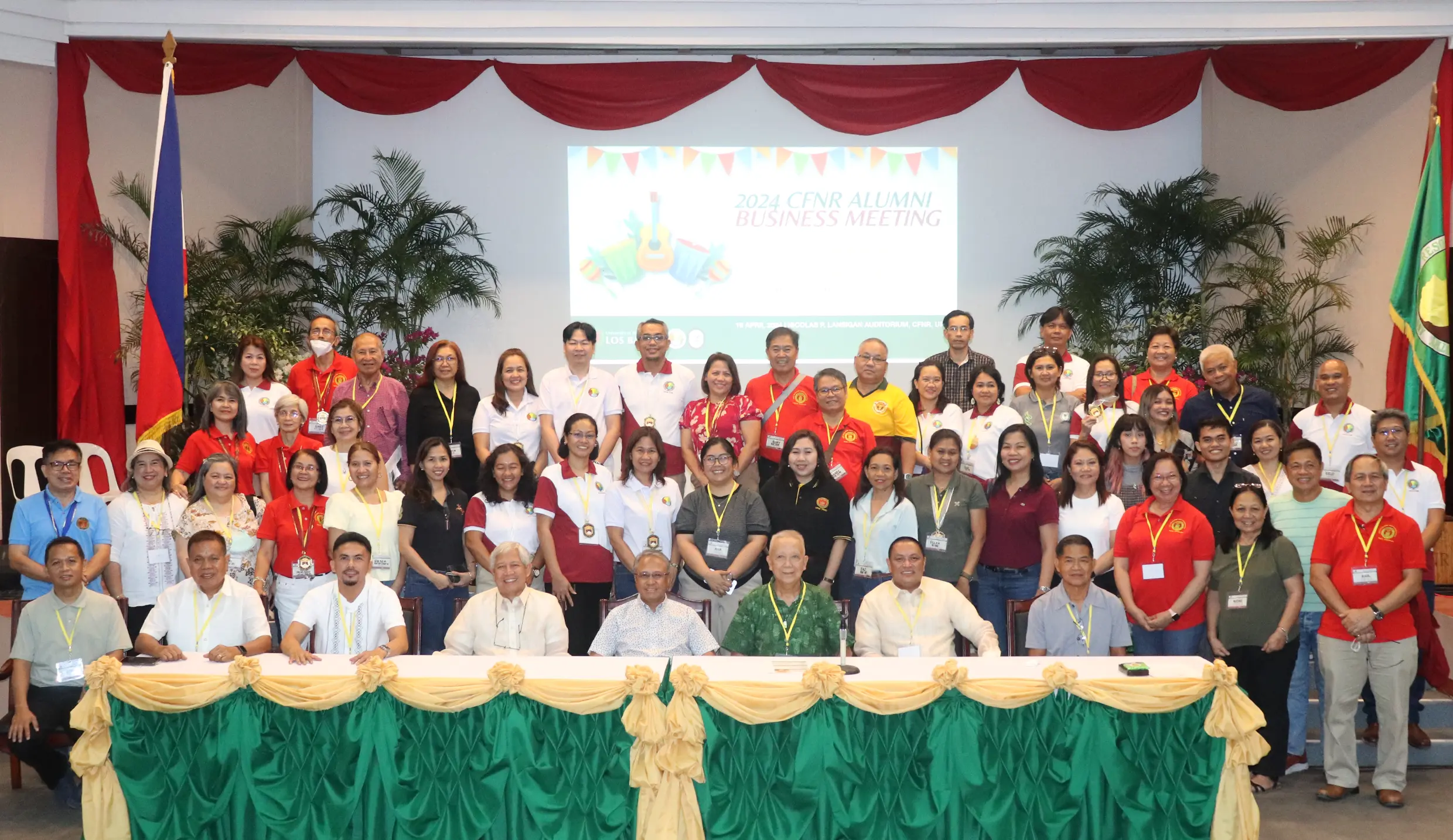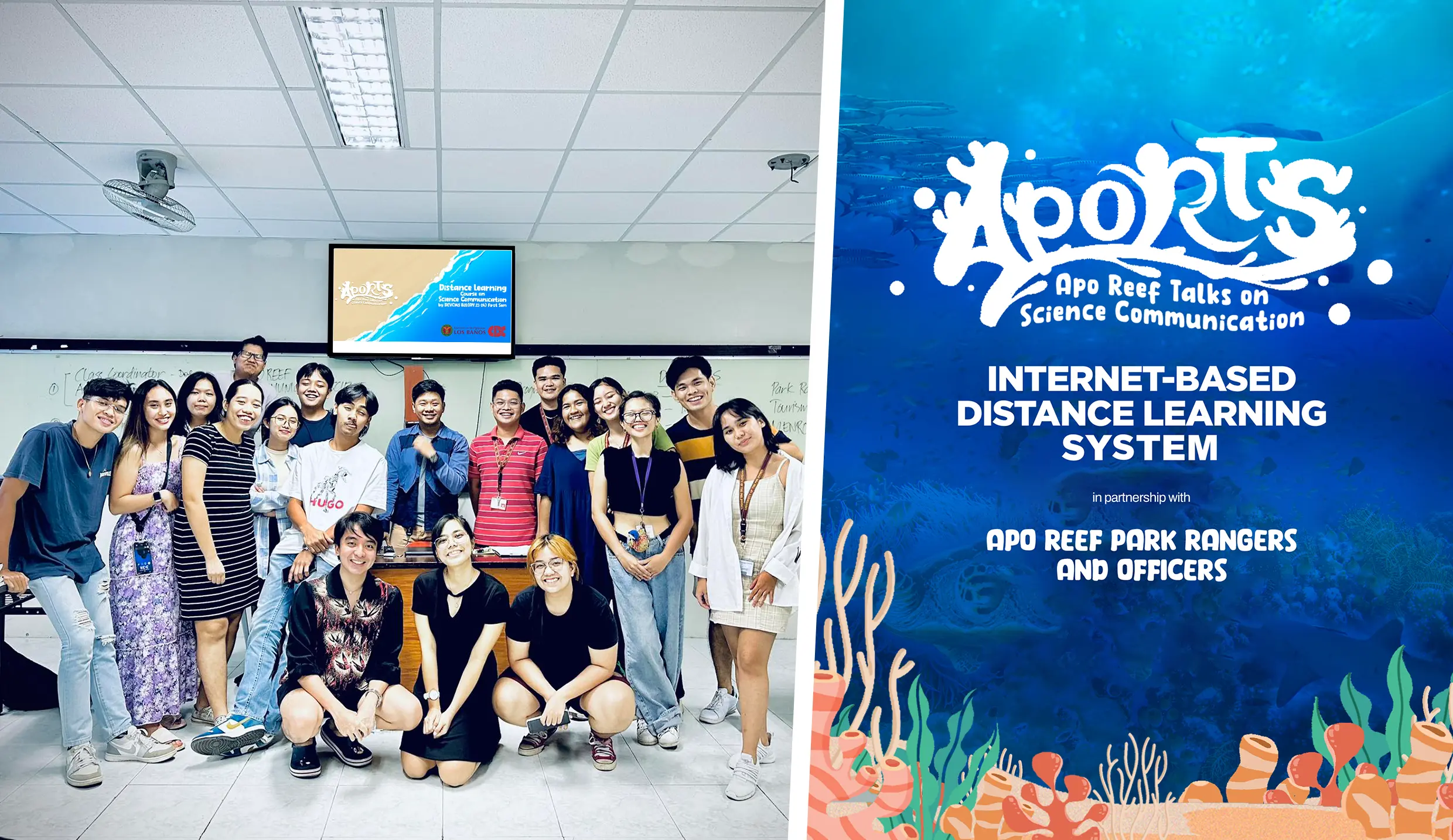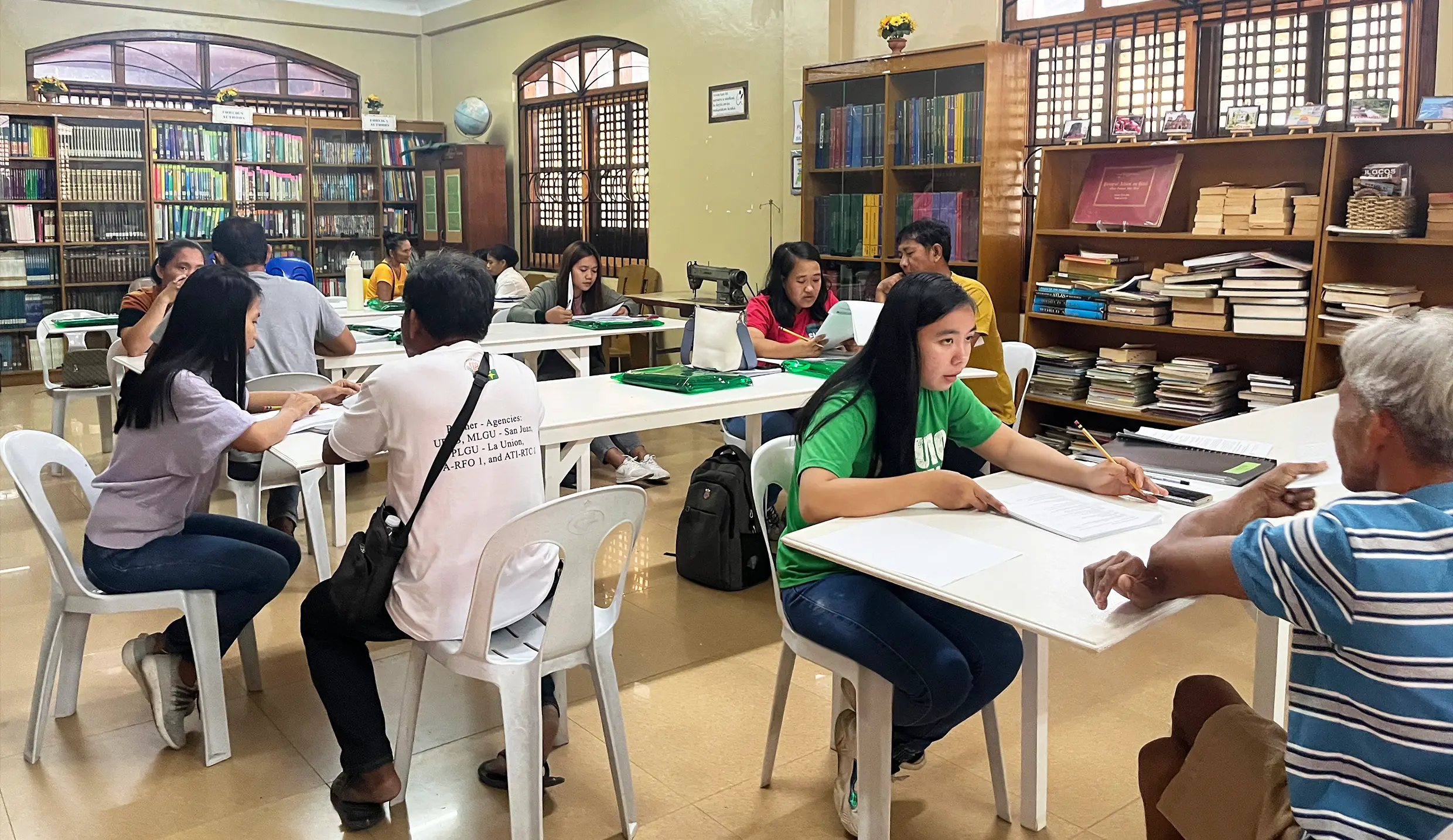
The College of Development Communication (CDC), through the Department of Science Communication (DSC), presented the Harmonized Science Communication (scicom) Framework to officials of the Department of Science and Technology (DOST) in a ceremony held at the Acacia Hotel in Alabang on Aug. 8, 2023.
Intended to provide overall guidance in communicating science to non-expert publics, the framework was the major output of the DOST-funded project “Science for the People: Towards a Harmonized Science Communication Framework” led by DSC.
Garry Jay S. Montemayor, project leader and CDC faculty member, discussed the features of the framework that was crafted to help DOST and other SciCom practitioners plan effective initiatives for non-expert publics.
The framework recognizes three categories of intentions for scicom initiatives: communicating for science, communicating in science, and communicating about science, which are carried out through dissemination, dialogue, and participation.
It considers five major components of scicom activities: people actors (audience/participants, experts, scicom facilitators), message, initiatives, processes, and environment (facilitating conditions). Outcomes, as well as monitoring and evaluation, thread through the components.
According to Montemayor, the scicom framework supports the attainment of DOST’s recently rolled-out Science Communication Agenda and Strategic Plan for 2023 to 2028.
The scicom framework resulted from four studies, specifically: 1) public consultation through sectoral-based focus group discussions, 2) a national survey on public perception of science communication, 3) a scoping study of DOST’s scicom initiatives, and 4) a literature review of science communication models and framework.
Four regional consultation workshops were also conducted nationwide to gain staff inputs from DOST’s regional and provincial offices and agencies, particularly on the framework’s usability.
“We recognize that science communication is now understood as social conversations around science. May this framework spark that conversation to make science communication more effective for the Filipino nonexpert publics,” Montemayor said Asst. Prof.
In his keynote message, DOST Secretary Renato U. Solidum Jr. lauded how the framework complements the four pillars of DOST’s Strategic Plan: human well-being, wealth creation, wealth protection and sustainability, and the Science Communication Agenda.
“To promote these pillars to the Filipinos, and for them to use technology and innovation in their daily lives, we must communicate the essence of what science and technology means for them,” he said.
He added, “We need to empower society with the tools to comprehend and engage with the work of scientists, technologists, and engineers. And this comprehension is a testament to our enduring commitment to propel knowledge, awareness, and curiosity for the betterment of our communities. The seeds we plant through effective science communication initiatives today will undoubtedly yield a bountiful harvest of progress and empowerment for generations to come.”
Dr. Nathaniel C. Bantayan, vice chancellor for research and extension, who spoke on behalf of Chancellor Jose V. Camacho, Jr., expressed appreciation for how UPLB has pioneered theoretical reflections and discussions on science communication scholarship and praxis in the country.
He noted how this DOST-UPLB scicom framework project was meant to “renew and reinvigorate science communication for the non-expert publics in the Philippines.”
CDC Dean Maria Stella C. Tirol said the presentation of the scicom framework marks a significant milestone for UPLB, DOST, and the entire realm of knowledge dissemination and public engagement in science in the Philippines.
She emphasized that the framework “is not just a document, but a tool that can be used for planning science communication initiatives, projects, and programs at the individual and institutional levels. “Guided by this framework, we will be able to consider the key factors in crafting a workable and effective science communication program that will influence the lives of the marginalized people,” she said.
Dean Tirol recommended institutionalizing the framework and conducting research and document narratives on its use, which will serve as input to improve it amid the changing communication landscape further.
The event was graced by National Scientist Dolores A. Ramirez, as well as DOST officials, including Undersecretary Leah J. Buendia, Director Enrico C. Paringit of the Philippine Council for Industry, Energy and Emerging Technology Research and Development (PCIEERD), Director Richard P. Burgos of the Science and Technology Information Institute (STII), and Director Julius Leaño of Philippine Textile Research Institute (PTRI).
Other guests included Dr. Fernando dlC. Paragas (Dean, UP College of Mass Communication), members of Science Communication Philippines, Inc. (SciCommPH), as well as UPLB officials, namely Vice Chancellors Janet Malata-Silva and Roberto Cereno, Dean Agham C. Cuevas, and Dean Maribel Dionisio-Sese, former CDC Dean Ma. Theresa H. Velasco, and CDC’s department chairs and academic staff. (Reianne M. Quilloy)








